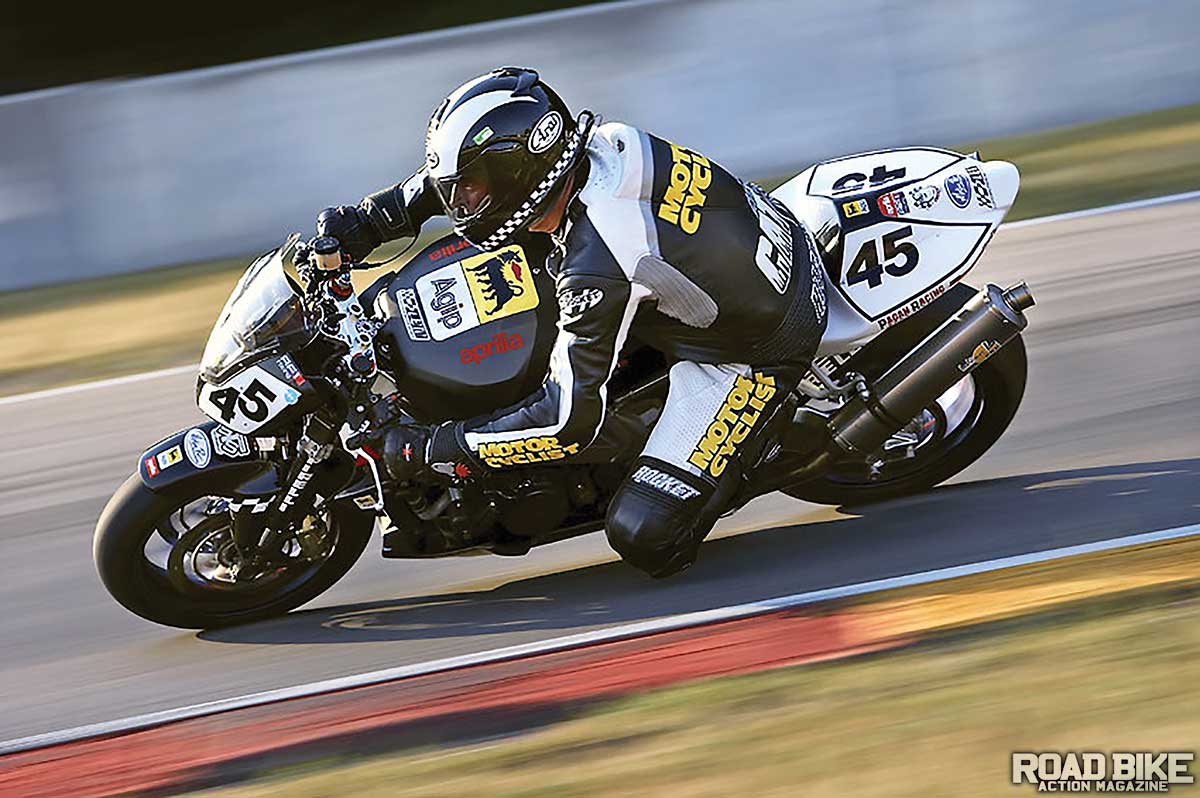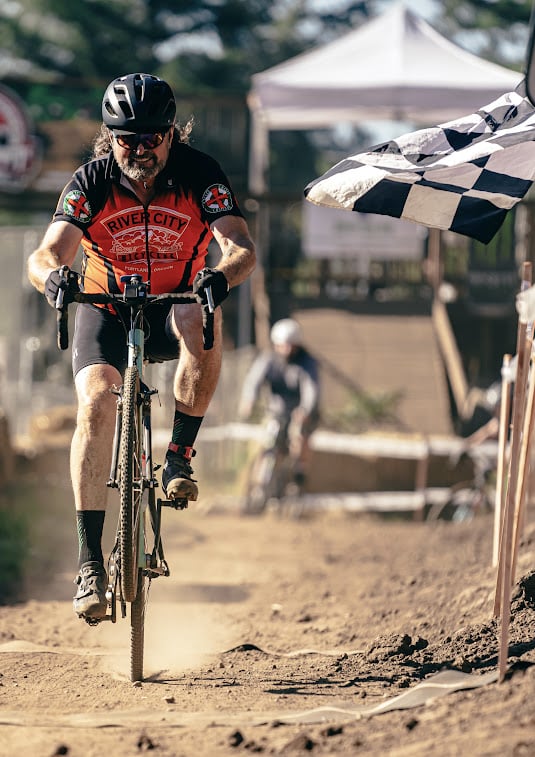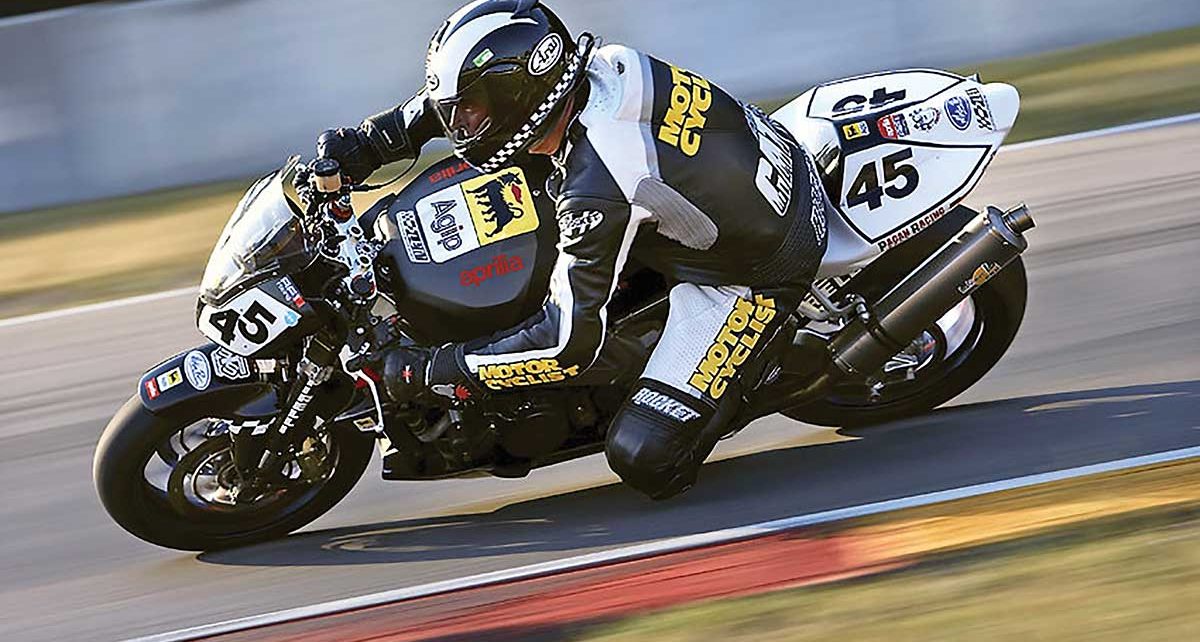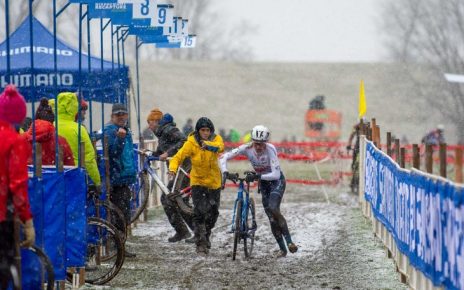By Zap
Although Brian Catterson and I started our journo careers around the same time in the moto world, we never really crossed paths, as I was a dedicated dirt bike grom working at our sister ’zine Motocross Action and he was working across the city at mags that mostly catered to the street bike world. One thing we did have in common was a particular affection for Italian bikes, whether they be the pedal or throttle variety.
Like many other story ideas that come to me, this one, too, sprung from a random Facebook post that I scrolled past last year. There was “Cat Man” announcing to the world that he’d bought a new bike and was planning on attacking the local cyclocross series in Portland. I was stoked to hear of the effort and passed on some race tips that I thought might be helpful.
By the end of his 21-race season, Brian said he had finished every race and even enjoyed one top-10 finish in the Master’s 60+ class. Fabulous! Thinking that his story of buying a beater ’cross bike and committing to the effort could be beneficial to all of us, I decided to find out more. This is Brian’s story on coming to ’cross late in life—and loving it!
How long have you been cycling?
Since I was a kid, probably 4–5 years old. I grew up in the New York suburbs on Long Island, where we rode our bicycles as much for transportation as for fun. As a young teenager I wanted nothing more than a dirt bike, but my parents were dead set against that happening. BMX was only just working its way east from SoCal, so I bid my time by riding my Stingray on dirt trails in the woods. When I outgrew that, I got a 10-speed, which meant 2×5 gearing back then, and continued to ride in the woods. So, I was riding a road bike off-road way before it was cool—before I even knew cyclocross was a thing. Of course, that ceased as soon as I got my first dirt bike—a 1975 Honda CR125 Elsinore that I bought with paper-route money. That ultimately led to a long and illustrious career in motorcycle publishing with stints at Cycle World and Motorcyclist magazines starting in 1988.
What are your current bikes?
I’ve got a thing for Italian vehicles, be they gasoline or human powered. Thus, my garage contains an Aprilia, a Ducati, a Vespa and a Fiat parked in the driveway. My bike room is stuffed full of mostly Bianchis. The Cross Concept has got old-school cantilever brakes, but its scandium frame is super lightweight. Plus, who doesn’t love Celeste?
What got you involved in cyclocross?
There were a couple of contributing factors. First, I’ve raced motorcycles my entire life. Motocross is my first love, but there’s no denying it’s dangerous. I like to joke that I got so good at riding dirt bikes, I could hurt myself without
falling off!
Second is the cost. Racing motorcycles is expensive, and when the supply of magazine test bikes dried up, I realized exactly how expensive! I couldn’t go on throwing money into a bottomless moto pit forever, so as I approached retirement age, I decided to try racing bicycles. There’s a huge cyclocross scene here in Portland, which drew me in like a moth to a flame. Turns out, ’cross fires many of the same synapses as motocross while being comparatively safe and inexpensive. I know lots of ’cross racers who have never been hurt. And, while you can certainly spend as much on a ’cross bike as you can on a moto, it’s not written in stone. I bought my Bianchi off Craigslist for just $350 and it’s better than I am.
The only change I had to make to the bike was gearing. The bike had a 2x drivetrain with a 12-26 cassette, and all it took was one race to realize that the gearing was too tall. The first change I made was for an 11-32 cassette, and then after a few more races I realized that I never used the big ring, so I switched to the 1x.

How would you distinguish the feel between twisting a throttle and pushing pedals?
I think the skills readily transfer over. The biggest differences are obvious: Motocross bikes are heavier and faster, plus they’ve got suspension. There’s a lot more momentum on a motorcycle, which makes them more stable.
Cyclocross bikes need to be as light as possible because riders shoulder them on run-ups, plus they’ve got steep head angles to negotiate tight U-turns, which makes them twitchy at speed. Of course, speed is relative, and the fastest you go on a ’cross bike is about as slow as you’d ever go on a moto bike. But then, a ’cross course is only half as wide, so the sensation of speed isn’t that different. As much as I love racing motocross, as I got older it became harder to think about spending time on crutches! With cyclocross, I get to scratch the same competitive itch I get racing motocross, but it’s just a lot safer. The way I look at it, you can never be too old to race cyclocross!
What’s the hardest part about racing ’cross?
When I posted on social media that I was contemplating racing ’cross, a bunch of my friends commented that it was way harder than moto. I honestly don’t find that true. Motocross, if you’re going fast and not just play-riding, is extremely physical. A moto bike weighs around 240 pounds, roughly 10 times as much as a ’cross bike—and manhandling that over rough terrain for 30 minutes plus two laps, twice per race day, is a total body workout. Seriously, muscles you didn’t even know you had hurt for days afterward.
In ’cross, your lungs burn, your legs turn to rubber and, if it’s a “heavy” course (muddy, sandy, hilly—take your pick), your lower back will ache something awful. But no matter what, you’ve got to keep turning those pedals. In moto, you always have the option of sitting down, twisting the throttle and nursing it to the finish line.
Besides doing some ride clinics and reading books, did you ever do any ’cross-specific training?
Not really. Since I have Mondays off from work every once in a while, I would go out and do a road ride on a specific course and just see how I could improve my time. Although I think I’ll add a heart-rate monitor for next year, I relied on Strava to keep track of any improvements I was making.
Best tips for first-time ’cross riders?
Most clubs offer skills clinics, so enroll and practice what you learn. Read a book; “Cyclocross Training and Technique” by Simon Burney is a good one. YouTube is a treasure trove of information; Kerry Werner, Rebecca Fahringer and Curtis White have done some very informative pre-ride videos.
Don’t skimp on training. You could have mad skills on the bike and still not win if your competition motors past you on the straights. Ask me how I know!
Most important, don’t get discouraged. I didn’t finish the first three races I entered, and then when I did manage to finish one, it was in dead-last place. But, a fellow competitor told me, “You still beat everyone sitting at home on the couch.” The ’cross community is amazingly supportive, and it’s not uncommon to hear one of the leaders shout, “Looking good,” as he laps you! I have routinely witnessed throngs of spectators cheering on an obviously struggling newbie, often by name. You’ve just got to power through it. ’Cross is hard. If it wasn’t, there would be more people doing it.
What was your best experience on a bike?
Honestly, I haven’t had that many, because I rode motorcycles for a living and mostly trained on bicycles. But, back in the summer of 2019 I rode the Willamette Valley Scenic Bikeway for 170 miles from Portland to Eugene. It was my first ride using panniers, and I quickly learned a lesson about the importance of gearing and how a bike handles with an extra 40 pounds added to it.
Favorite motorcycle ride ever?
That’s easy: In 2001 I rode a vintage ’62 MV Agusta in the Giro d’ Italia. That humble 125cc four-stroke was only good for around 45 mph, making the outing akin to a bicycle tour of Italy without the pedaling. For six days and 830 miles, we explored the scenic countryside, stayed in medieval villages, and were wined, dined and entertained every step of the way.





